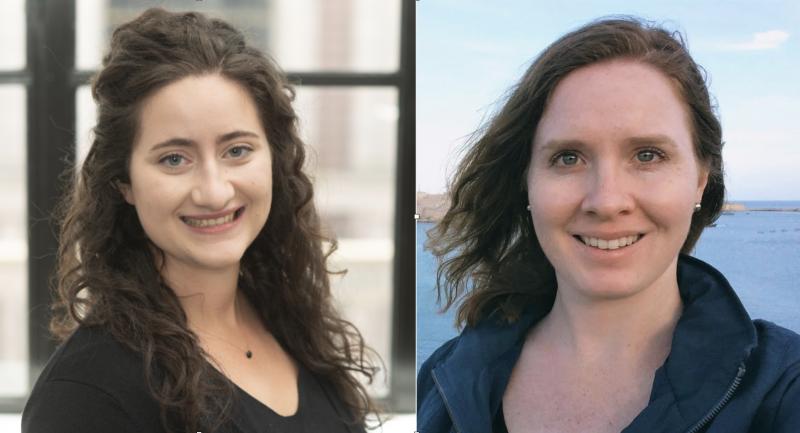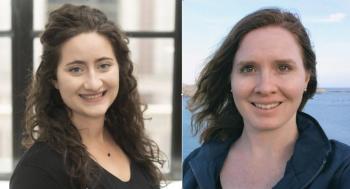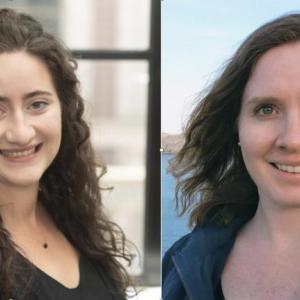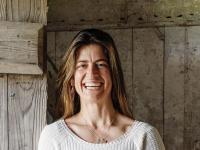Two Midcoast Smith College graduates collaborate on winning ventilator design
NORTHAMPTON, MASS. — SmithVent, a team of 30 Smith College Picker Engineering Program alumni, staff, faculty, and friends, is the winner in the CoVent-19 Challenge for its ventilator design. On that team were two Midcoast residents, Adrienne Horne, of Appleton, and Katie Wood, of Hope, were integral to the effort.
On April 1, a team of anesthesiology residents from Massachusetts General Hospital in Boston, Massachusetts, launched the CoVent-19 Challenge to solicit open-source ventilator designs to aid the current global pandemic. The competition attracted 200 teams from 40 countries; seven teams were invited to the finalist round for rigorous testing of their designs.
The SmithVent team collaborated virtually to both design and build a ventilator tailored to treatment of the novel coronavirus (COVID-19) patients. The result is a simple, cost-effective, rapidly-manufacturable, pneumatic ventilator design informed by healthcare professionals, according to a news release from Smith.
Horne and Wood, both engineering science majors who each earned a Bachelor of Science degree at Smith, are now employed as a project manager and project development engineer, respectively.
To help foster innovation, SmithVent design files and documentation are available freely online for all to access. The CoVent-19 Challenge organizers are consulting with medical device manufacturers to carry the SmithVent design through regulatory compliance and production in emerging markets.
“As the COVID-19 crisis unfolded, there were many stories about DIY ventilators that sounded good on the surface, but didn’t have anywhere near the functionality that patients needed,” said Picker Engineering Program professor Susannah Howe, who formed SmithVent in early April to contribute to the COVID-19 amelioration efforts. “I was intrigued by the structured, open-source nature of the CoVent-19 Challenge. Collaborative, applied design is one of the tenets of engineering in our program.” For SmithVent, participation was about more than just designing a safe ventilator: it offered alumni from different class years and different industries the chance to meet and work together. When the call went out, more than 25 Smith alumni from 2006-2020 answered. As SmithVent team member Nora Paul-Schultz noted, “Most of us had never met, let alone worked together. Knowing that most of us had a Smith Engineering education meant we had a common experience that allowed us to work as a cohesive team from the start.”
Operating as a virtual team, SmithVent team members worked remotely and, often, asynchronously.
That means, said Horne, they were all collaborating while working at different times.
The team used a sprint format, dividing the work into five-day sprints. At the beginning of each sprint, the team would come together to identify the goals for that spring and plan the associated tasks. At the end of each sprint, the team held a sprint review to discuss what had been completed, solicit feedback from other teammates, and adjust the process as needed.
The 30-person team self-assembled into subteams, coordinated by project managers, so that team members could work on the SmithVent project asynchronously while also working full time at their paying jobs or being a full time student. Co-lead Astrid Landeau said, “The sprint process allowed any member of our team to join in, pick up a task, and contribute to it even if they had only a half hour to spare.”
In the first round of the challenge, remote work was more feasible as the work was focused on research and design.
In the second round, this proved more challenging: the team needed to build a physical prototype.
While team members continued to work remotely to refine various aspects of the design, Susannah, Eric Jensen of the Center for Design and Fabrication (CDF), Laura Lillienkamp ’18 of the Design Thinking Initiative, and computer science professor Nicholas Howe assembled and tested the ventilator prototype at the CDF on campus. The four worked diligently on assembly, slowed only slightly by adhering to social-distancing guidelines. Despite working mostly remotely, all team members contributed directly to the prototype’s success.
Virtually, team members debugged code, experimented with the electronics and user interface, and built physical mock-ups. Team members even guided system integration and other highly technical tasks through online video-conferencing.
During the challenge, SmithVent focused on the broader context of the project. From early on, team members focused on medical research and engaged healthcare professionals to learn about the unique challenges of COVID-19. The team wanted to ensure its ventilator would help these critical workers.
Multiple feedback sessions with respiratory therapists, doctors, and computer science professor R. Jordan Crouser ’08, who specialises in human-computer interaction, informed the design. The team also leaned on the entire Smith engineering community. Before completing its prototype, the SmithVent team held a design review to solicit feedback from current students, alumni, and staff. Just two months after launching the team, SmithVent created a ventilator.
SmithVent team members found the process to be both educational and inspirational.
“When we started out, I was nervous to join the team because I didn't know anything about ventilators and so I was unsure about how I could contribute,” said Horne. “Our team's collective attitude and ways of working changed that. Our co-leads, Astrid and Susannah, designed our project management framework so that we were able to self-select what we were interested in learning about and volunteer for work we had time to do. So I could always feel the passion from my teammates — in completing medical research, in creating our design, in researching medical device standards, all of it! And I was able to find ways to contribute my unique skills to the team to feel like I made a real contribution. I'm so proud of our design and the fact that our team is committed to keeping it open source so that it can be adapted and developed with a focus on saving more lives.”
For Wood, it was about contribution, connection, and teamwork.
“I am still in awe of the contributions all my team members made to our design and the contribution our design has made to the Challenge and to the efforts to fight COVID-19,” she said. “In the last three months, although isolated from friends and family, I have been connected, supported, and motivated more than I have been in a long time. I now know a lot more about ventilators and how COVID-19 is affecting people, but I also learned so much from my team members, especially about project management, successful communication, and teamwork. Engineering is still a male dominated industry, so it was very refreshing and empowering to work on a team that was nearly all female again, and I think our success speaks to the value that can have.
“It is also important to me that we entered the Challenge with the collective understanding that our design would be open-source and available for anyone to use, within legal and ethical limits, and that we would not be making money from it. We also did not apply for patents or intellectual property licenses, but clearly publicized our design to prevent anyone else from taking it out of the open-source realm. Ventilators are expensive and not accessible to everyone, but this is something we can contribute to help alleviate that issue.”
That open-source approach was fundamental to its success.
Astrid Landau ’15, co-leader with Susannah, called the challenge: “an introduction to remote project management. Learning how to use video calls and technology to utilize expertise and cross time zones showed me the beauty of these incredible collaborations.” All team members volunteered their time on the project, working for no compensation and with no intent to monetize their design. In the same spirit, the team wishes for their efforts to remain open-source and in the public domain. Whether to manufacture a new ventilator to combat COVID-19 or to inform the research and design of ventilators more generally, SmithVent hopes to improve and inform the literature around low-cost, mechanical ventilators. According to Astrid, implementing “even one component of [SmithVent’s] design could help save lives.”
For more information, follow SmithVent on Facebook (teamsmithvent), Twitter (@smith_vent), and Instagram (smith_vent) or email Astrid Landeau at team.smithvent@gmail.com.
Event Date
Address
United States


























